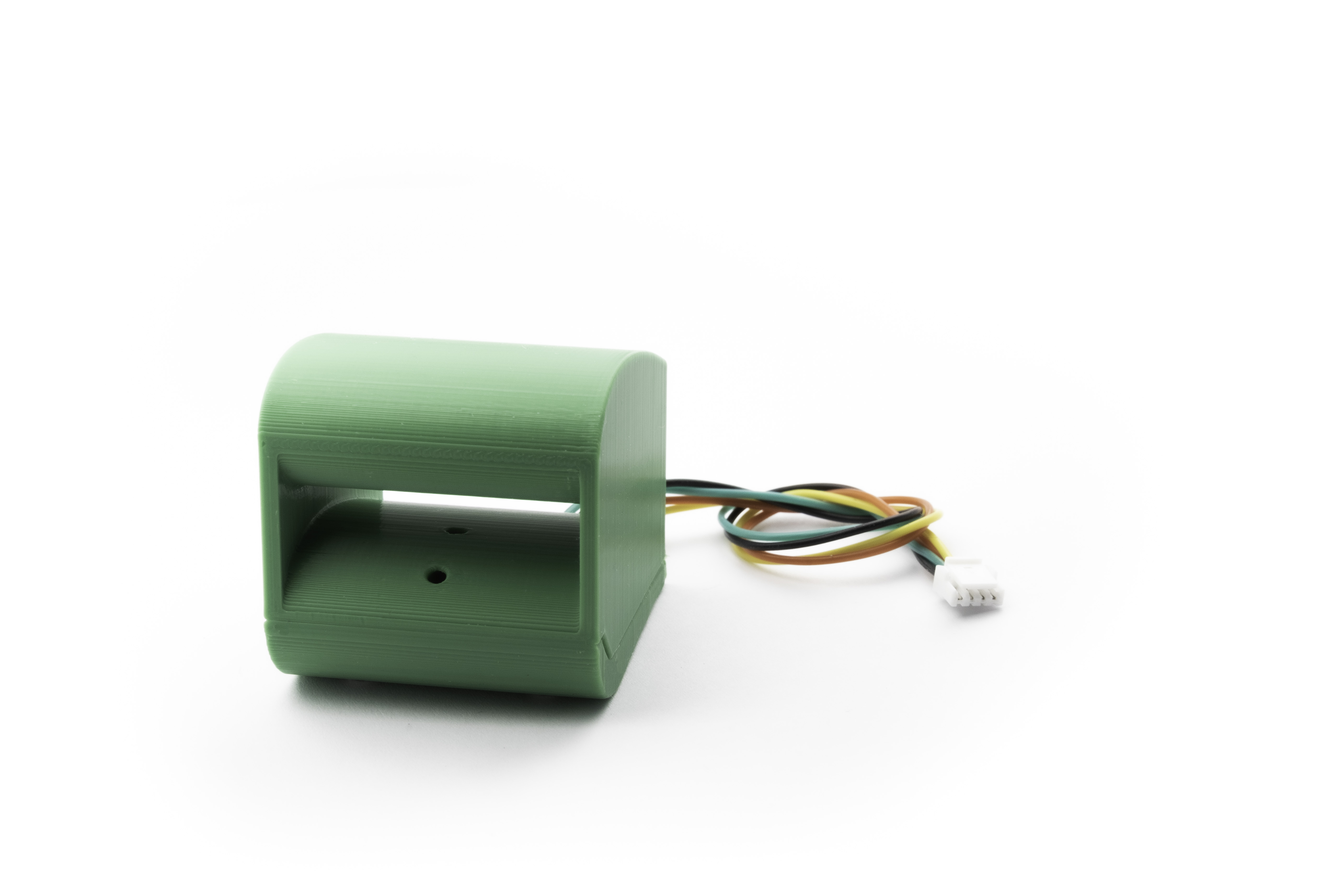ThunderFly TFASPDIMU02 is I2C bus sensor board equipped with a differential pressure sensor (Sensirion SDP3x) and 9-axis motion tracking sensor (ICM-20948). The board is equipped with a 4-pin JST-GH connector. The sensor board is designed for multiple uses. It can be used as a self-adjusting anemometer WINDGAUGE03 or as an airspeed sensor for UAVs with optional function as the external magnetometer. The featured use (after firmware improvement) could be an angle of attract sensor, stall detector, or vibration (Flutter) detector.
TFASPDIMU is commercially available from ThunderFly s.r.o., write an email to info@thunderfly.cz or shop at Tindie store.
- Type: Differential and 9-axis motion sensor board
- Mass: 3 g
- Size: 30 x 15 mm
- Power input: +5 V
- Connection: 4pin JST-GH connector PixHawk compatible
SDP3x differential pressure sensor
- Range: +/- 125/500/1500 Pa (depending on exact sensor type SDP33 by default)
- Excellent accuracy and repeatability, even below one Pascal
- No zero-point offset, no temperature drift
- Calibrated and temperature-compensated
- Fast sampling time of 2kHz at 16 bit resolution
- I2C address: 0x21 (0d33), could be changed by JP2 and/or resorderig the R10 value.
ICM-20948 9-axis IMU unit
- 3-axis gyroscope, 3-axis accelerometer, 3-axis compass (magnetometer)
- Onboard Digital Motion Processor (DMP)
- On-chip 16-bit ADCs and Programmable Filters
- 7 MHz SPI or 400 kHz Fast Mode I²C
- Digital temperature sensor
- Default I2C address: 0x68 (0d104), can be changed to 0x69 (0d105) by adjusting the JP1.
Ground control station anemometer WINDGAUGE03 is based on a TFASPDIMU sensor which is used for both wind direction and wind speed measurement.
Our TFSLOT sensor is an airspeed sensor for use mainly on UAVs. Due to the 3D printed case, optimizing housing according to the sensor's location on the UAV and tuning its characteristics is possible. The first use of this sensor was on our autogyro TF-G2.
More details about this solution are available in the repository TFSLOT01.
The symmetric variant of TFSLOT sensor for different mounting options TFPIPE01.
This anemometer is also based on the venturi effect. Thanks to a clever design, it will measure the wind speed from all directions (without knowing the direction).
In case of mounting on slip-ring bearing the sensor could sense air AoA of the vehicle.
The venturi geometry could also be inverted therefore the pressure ports look in open airflow. That results in the ability to detect stalls on wings by detecting the absence of pressure difference and increasing pressure fluctuations on the wing surface.
Full schema is available in PDF
Pressure sensor connections are aligned to the center of the PCB width.
| Signal | Pixhawk Color | ThunderFly color |
|---|---|---|
| +5V | Red |  Red Red |
| SCL | Black |  Yellow Yellow |
| SDA | Black |  Green Green |
| GND | Black |  Black Black |
Pixhawk pinout is listed according to the Pixhawk connector standard.
To increase the transmission quality, it is mandatory to create twisted pairs of SDA, GND, and SCL,+5V on the cable (as shown in the image)
- 10 twists for each pair SCL/+5V and SDA/GND per 30cm cable length
- 4 turns/twists of pairs per 30cm cable length.
For reading data from the sensor, we have prepared a Python script in the PyMLAB library that uses the pySMBus to read data. It can be used directly from a computer with a corresponding converter (for example MLAB USBI2C01A) or with one-board computers (Odroid, raspberry, and similar) that have own smbus output.
Calibration can be verified by mounting an anemometer to the car roof and comparing it to GNSS speed. This needs to be done in windless weather.
There exists a pull-request of modified SDP33 driver into PX4 stack.
The main use of this sensor is as an airspeed sensor. It can also be used as an external magnetometer and thermometer.
We are currently unable to implement the sensor in the Ardupilot flight stack. However, we will be happy to assist with implementation. You can contact us




